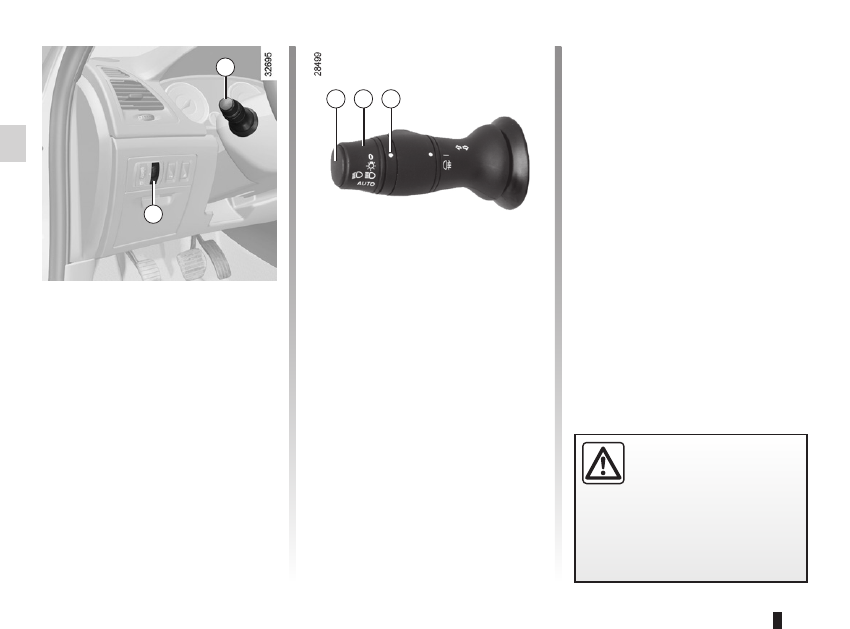Renault Laguna Coupe (2012 year). Instruction - part 5

lighting:
exterior ............................................(up to the end of the DU)
instrument panel ....................................................(current page)
lights:
side lights .........................................................(current page)
lights:
dipped beam headlights ...................................(current page)
hazard warning lights signal ..................................(current page)
signals and lights ..................................(up to the end of the DU)
lighting:
instrument panel ..............................................(current page)
daytime running lights............................................(current page)
1.66
ENG_UD19986_4
Éclairages et signalisations extérieurs (X91 - D91 - Renault)
ENG_NU_939-3_D91_Renault_1
daytime running lights
function
(only relates to front lights)
Depending on the vehicle, the lights
come on without using stalk 1 when the
engine is started. To activate or deacti-
vate this function, refer to the informa-
tion on the “Vehicle settings personali-
sation menu” in Section 1.
á
main beam headlights
With the dipped beam head-
lights lit, pull stalk 1 towards you. This
indicator light on the instrument panel
comes on.
To return to the dipped headlight posi-
tion, pull stalk 1 towards you again.
Exterior lighting and signals
Before driving at night:
check that the electrical
equipment is operating cor-
rectly. As a general precau-
tion, check that the lights are not
obscured (by dirt, mud, snow or ob-
jects being transported).
EXTERIOR LIgHTINg ANd sIgNALs
(1/3)
2
1
4
1
u
side lights
Turn the ring 3 until the symbol
is opposite mark 4.
The instrument panel will light up. The
brightness can be adjusted by turning
the control knob 2.
k
dipped beam
headlights
manual operation
Turn the ring 3 until the symbol is oppo-
site mark 4. This indicator light on the
instrument panel comes on.
Automatic operation
(depending on vehicle)
Turn ring 3 until the AUTO symbol is op-
posite mark 4: with the engine running,
the dipped beam headlights switch on
or off automatically depending on the
brightness of the light outside, without
touching stalk 1.
3